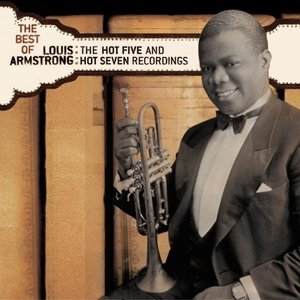
Published on Oct 8, 2002
Louis Armstrong did not invent jazz, but by popularizing both
the jazz solo and scat singing, he was essential in shaping it.
The Best Of The Hot Five And Hot Seven Recordings is an 18
track CD of highlights taken from Columbia’s four-CD box set
The Complete Hot Five And Hot Seven Recordings, and is an
excellent overview for those interested in sampling the music where
he developed his innovative style.
The songs here were recorded between the years of 1926 and 1928.
Despite their age, the sound quality is exceptional. Of course,
they don’t sound like they were recorded today, but the surface
noise is minimal, and the recordings are surprising clear and
sharp. Obviously, a great deal of care was made to preserve these
recordings and make them sound as vibrant as possible.
Now to the songs themselves: it should be noted that Armstrong
does not sing very often on this collection. He vocalizes on only a
third of this collection, and even among them, only three songs
have actual lyrics sung. Armstrong, at this point of his career,
was purely a jazz musician and provides us with some sweet solos.
If you are looking for the more pop oriented Armstrong, then you
are better off looking elsewhere.
The development of the band can be broken down in three phases,
the earliest recordings here show the Hot Five band as just a
typical dixieland band with an above average trumpet player. Of
special note from this period is “King Of The Zulus”, a curious
selection for a highlight as it has a not so PC parody on
Jamaicans. Still, the piece has a slow, eerie feel that does set it
apart.
Since the track listing is in chronological order, we eventually
hear the band develop into a well-oiled machine. Tracks such as
“Potato Head Blues” and “Struttin’ With Some Barbecue” really kick.
At this point, the band was tight whether it had five or seven
members. Armstrong’s playing continues to develop, finding a
greater melodicism in his solos whether the tempos are slow or at
breakneck speed.
The final phase shows the band trying different things. Of
course, this is probably because the personnel totally changed
(with the exception of Armstrong) starting with “West End Blues”.
The addition of pianist Earl Hines was probably the biggest shot in
the arm for this band as he brings a very sophisticated touch to
these numbers.
The arrangement for “West End Blues” must have been daring for
its time. Armstrong starts with a thunderous solo, then along comes
the melancholy melody line, the clippity clop percussion, and
Armstrong’s wordless but passionate singing. In short, this is
truly a standout.
The Best Of The Hot Five And Hot Seven Recordings is not for
everyone, but it is definitely worth a listen for all jazz fans.
The great playing of Armstrong and company transcend what you may
think of dixieland. Inevitably, there are some great Hot Five and
Seven songs missing from this collection as a single CD can only
hold so many songs. For the complete picture, there is the box set.
However, this all killer/no filler collection may be all you
need.